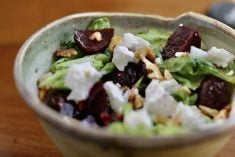As I sit down to write this column, I hate to tell you that it is my last one. I’ve decided it is time to retire. I am leaving you, hoping for more time to pursue other activities.
I was a new grandma when we started writing the column 14 years ago. I remember taking the phone call from Diane Rogers of The Western Producer, telling us that we were chosen to take over Emmie Oddie’s column.
Read Also

Communication key to bridging generation gap
Each generation is shaped by the predominant forces at play during their formative years. Acknowledging these influences can improve communication among the generations.
Each week, we would choose whose turn it was to write. Surprisingly, not once did we get mixed up and not send in an article.
I’ll never forget some of your letters. TEAM will continue to do the column without me, so keep your letters and questions coming.
Thanks for travelling this life-changing venture with me.
Dear TEAM: Did you know that one cup of milk has the equivalent of 16 small packages of sugar: One small package has .8 grams. It doesn’t matter if it is one percent or two percent.
Maybe we need to look at what kind of a diet dairy cows are on. Have dairy cows always had milk with this high amount of sugar? Or by trucking in corn from the United States and adding it to dairy rations, are the dairy cows on a high sugar diet?
Does the milk from a grass-fed beef cow have less sugar than a dairy cow? I wonder. – E-mail from Sylvia
Dear Sylvia: Don’t be alarmed by the sugar content of milk. A dietitian with Dairy Farmers of Canada has responded to your query by saying that the carbohydrate content of nutritious food such as dairy products may be confusing.
The carbohydrates found in dairy products, fruit and starches are an essential part of a balanced diet because they are necessary for proper brain functioning and provide our body the energy to function.
Therefore, the lactose in milk and fructose in fruit are OK because they are good for us and are accompanied by many healthful substances.
A cup of orange or apple juice contains twice as much naturally occurring sugar as milk, but all these carbohydrates should be enjoyed.
There is a difference between naturally occurring sugar in food and sugar added to our food. Added sugar can be a problem. Consuming excess sugar has been linked to obesity and illnesses.
Many of us consume more added sugar than we should. Food such as sweetened beverages, desserts, candy and breakfast cereals can quickly put us over the limit.
I wasn’t able to get an answer regarding what cows eat and the sugar content. I do notice that nutrition facts of decades past have the sugar content in milk the same as today.
A professor at the University of Saskatchewan says that lactose content in raw milk fluctuates between 3.8 and 5.5 percent.
Many factors may contribute to this. In the processing it is standardized so that no less than 4.8 percent of sugar (12 grams) should be in a cup of milk.
Have you looked in your car lately to see what could be a hazard? Most of us have things in there that could hurt or kill us if we were in an accident or had to brake quickly.
Window scrapers, cups, tools and other items can turn into missiles. If an air bag goes off, you don’t want any of these items between you and the air bag.
What about a purse sitting on your lap containing pens, combs and other objects that could puncture you if the air bag is deployed?
Put hard objects away under the seat or in the glove department.














